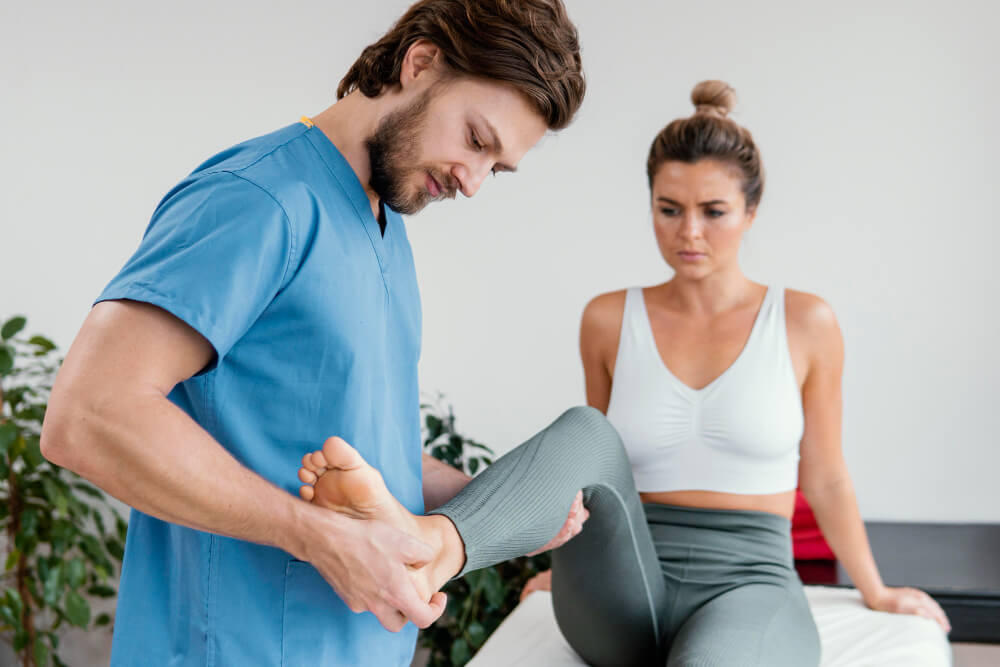Conquer Your Comeback: Understanding and Addressing Knee and ACL Injuries
The knee joint, a complex masterpiece of bones, ligaments, and cartilage, is crucial for mobility and stability. Unfortunately, this vital joint is susceptible to injuries, with the anterior cruciate ligament (ACL) tear being one of the most common and potentially debilitating. This article delves into the world of ACL injuries, equipping you with knowledge and empowering you to navigate the path to recovery.
Demystifying the ACL: Understanding its Role and Function
The ACL, located deep within the knee joint, acts as a primary stabilizer, preventing the shinbone (tibia) from sliding excessively forward relative to the thighbone (femur). It plays a critical role in activities that involve sudden changes in direction, pivoting, and landing from jumps, making it particularly vulnerable in sports like basketball, soccer, and skiing.
Recognizing the Signs: Common Symptoms of an ACL Injury
A sudden, sharp pain, often accompanied by a popping sound, is the immediate hallmark of an ACL tear. Other telltale signs include:
- Rapid swelling and stiffness in the knee
- Difficulty bearing weight on the injured leg
- Instability or a feeling of “giving way” in the knee
- Decreased range of motion
Seeking Expert Guidance: Diagnosis and Treatment Options
If you suspect an ACL injury, seeking immediate medical attention is crucial. A thorough physical examination, coupled with imaging tests like MRI scans, will confirm the diagnosis and determine the severity of the tear.
Following diagnosis, your healthcare provider will discuss treatment options, which fall into two main categories: non-surgical and surgical.
Non-Surgical Management: Strengthening Your Recovery
Non-surgical treatment is often recommended for:
- Partial ACL tears
- Individuals with low activity levels
- Those who are not candidates for surgery
This approach focuses on:
- RICE therapy: Rest, ice, compression, and elevation to reduce pain and inflammation.
- Physical therapy: A comprehensive program to regain strength, flexibility, and stability in the knee joint, improving balance and neuromuscular control.
- Bracing: Wearing a knee brace to provide support and prevent further instability.
Surgical Reconstruction: Restoring Stability Through Surgery
Surgical reconstruction is primarily considered for:
- Complete ACL tears
- Individuals with high activity levels who desire complete stability for returning to pivoting and cutting sports
- Those seeking faster recovery and a potential return to pre-injury level of function
The surgery involves replacing the torn ACL with a graft, typically sourced from other tissues within the knee or from a cadaver. Different surgical techniques exist, and your healthcare professional will recommend the most suitable approach based on your individual needs and anatomy.
The Road to Recovery: Navigating Rehabilitation and Beyond
Recovery from an ACL injury, whether treated surgically or non-surgically, is a journey requiring dedication and commitment. A comprehensive rehabilitation program plays a vital role in regaining full function and preventing future complications. This program typically involves:
- Pain management: Utilizing medication and physical therapy techniques to control pain and discomfort.
- Gradual strengthening exercises: Progressively increasing the intensity and complexity of exercises to rebuild muscle strength and stability around the knee.
- Balance and proprioception training: Retraining the body’s awareness of joint position and movement in space.
- Functional movement training: Gradually reintroducing activities that mimic the demands of your daily life and desired level of activity.
The duration of rehabilitation varies depending on the severity of the injury, treatment approach, and individual factors. It’s crucial to adhere to the guidelines provided by your physical therapist and healthcare team to ensure a successful and safe recovery.
Returning to Activity: Making Informed Decisions
Returning to activity after an ACL injury should be a gradual and well-planned process. Open communication with your healthcare professional and physical therapist is essential to determine when it’s safe to resume specific activities.
Factors like your progress in rehabilitation, residual instability, and individual risk tolerance are all considered in this decision-making process. It’s crucial to prioritize your safety and avoid returning to high-risk activities too soon, which could increase your risk of re-injury.
Living with an ACL Injury: Long-Term Management and Prevention
Even after returning to your desired activity level, managing an ACL injury long-term may be necessary. This includes:
- Maintaining strength and flexibility: Regularly engaging in exercises to maintain the strength and flexibility gained through rehabilitation.
- Proper warm-up and cool-down: Implementing proper warm-up and cool-down routines before and after activities to help prevent future injuries.
- Using appropriate equipment: Utilizing appropriate footwear and protective gear when participating in sports or activities that put stress on the knee.


